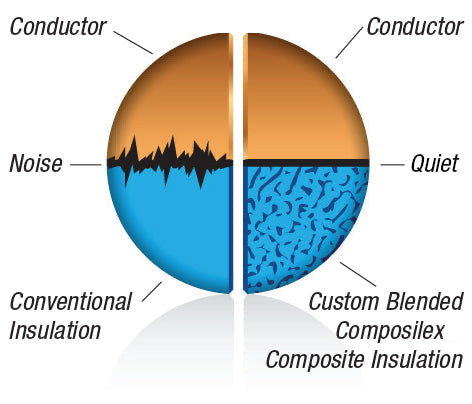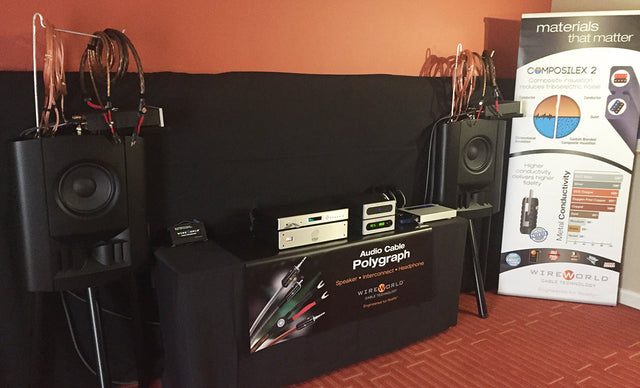Using Wireworld's consumer and professionals cables provided a smoother, fuller listening experience and a tangible benefit of utilizing cables that are built to last.
An easy way to start a social media fight is to bring up the topic of cables in one of those audiophile groups. Cables are one of the most divisive electronics products in both the professional and consumer markets.
Part of the problem with cables beyond the claims some manufacturers make about exotic materials and construction techniques is the voodoo associated with them. For example, the zealot side of the audiophile market often uses cable risers or elevator devices to lift cables off the floor to add focus and clarity to the sound of a system.
Steering clear of the category’s minutiae is the Florida company Wireworld. Sure, Wireworld offers those high-end cables often associated with the audiophile market, but the company also offers a complete selection of standard cables users can quantify based on the construction and overall build quality of the products.Sending me a mix of its pro products and a few consumer products, Wireworld allowed me the opportunity to experience a range of its products. Starting with its high-performance USB cables, Wireworld sent me a 1.5-meter Platinum Starlight USB 2.0 A-to-B cable, as well as a 1.5-meter set of its Equinox RCA interconnects, a PUH 1.5-meter Pulse Headphone cable to use with my HiFi Man HE-400S headphones, and a 15-foot Orbit instrument cable with right angle and straight TS connectors.Excited to try the cables (especially since I was working on a home recording project), I tore through the company’s packaging, which is aimed to attract retail buyers. Once I had the cables unpacked I started by connecting the USB cable to a Focusrite Scarlett 2i4 and my MacBook Air. Next I ran the RCA cables from the Focusrite unit to a pair of active Adam Audio Artist5 speakers. For the headphones, I swapped the stock cables for the Wireworld cable. I picked up my recording project by finishing some guitar tracking using the Wireworld instrument cable.
My primary findings in this home recording setup were the noise floor had lowered and the soundstage had more depth and clarity. In the case of the instrument cable, I think the Wireworld cable was quieter than my standard instrument cable due to its better shielding. The lack of noise was more pronounced on my Schecter Diamond Blackjack 21 guitar than my Gibson Les Paul because of the Schecter’s “coil tapping” option that allows me to run the guitar’s pickup in a single-coil mode (think Fender Stratocaster).Getting into some direct cable comparisons and some consumer electronics gear, I started by swapping out the RCA cables on my CD player. Later, I swapped the USB cable I use with a Meridian Direct DAC and my two-channel system to hear how my system performs in that type of situation.Going back-and-forth between the various cables, CDs and songs stored on my network, I found the Wireworld cables to be smoother and more detailed than similarly priced cables I was comparing them against. In addition, I thought the dynamics of the music were greater with the Wireworld cables with noticeable improvements in the punch and weight of my system's bottom end. The tipping point for me in recommending these cables has nothing to do with sound. Sound quality, after all, is subjective and it has as much to do with the associated equipment and user’s listening skills as it does with anything else. My reason for suggesting dealers check out these products involves build quality.I am pretty hard on cables. I am always pulling, tugging and rewrapping them because I am constantly checking out new components. Recently I had an expensive cable pull apart on me and this really aggravated me. I recognize that stuff breaks down, but given the subjectivity involved in evaluating cables, the first prerequisite has to be bulletproof construction. Throughout my time with the Wireworld products, I have been impressed with the materials used to build these resistant cables, the feel of the cables and the build quality. The termination uses sturdy connectors that feel well secured in place, and the jacket materials have withstood tangles and knots (especially in the case of the instrument cable). For those that are interested in building a robust, quality A/V system but don’t want to wade through the sea of cable performance hype produced by cable manufacturers, check out Wireworld’s product line. At the very least, dealers can point to the quality materials and construction of the products to take a topic that’s built primarily on opinion to move the focus to points that can be quantified.
More stories

Wireworld Technologies
Sara Flaaten
·

Wireworld Glossary
Sara Flaaten
·

